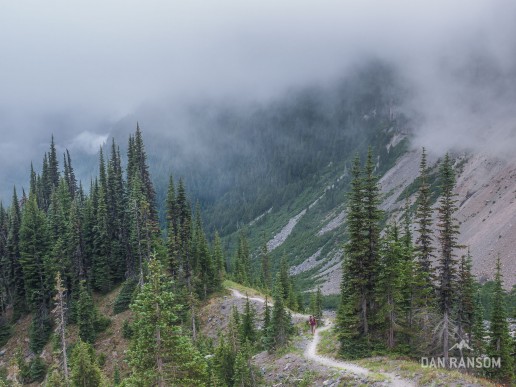Trading Big Miles for Big Views
After spending the previous 3 months hiking the southern 1100 miles of the Pacific Crest Trail, I was a bit worn down mentally. Physically, my body was as good as it had ever been, and I knew I’d be depressed bailing on the bigger objective.
With no commitments for another month, we looked at options for trading big miles for big views, and still experience a few pieces of the Cascades that we’d miss by bailing on the PCT. The Wonderland is the perfect fit.
The only catch? Getting a permit. We called ahead to Paradise Ranger station, and we were told if we could be flexible with our itinerary, we could almost certainly find a sequence of camps that would make the trip possible. The next morning we were at the ranger desk playing connect the dots.

Wonderland
The Wonderland Trail is a 93 mile loop circumnavigating the namesake of Mt. Rainier National Park in Washington. This classic trail is complete with huge views in every ecosystem from rain forest, to alpine tundra, and glaciers. There are few trails in the United States that combine a trail of this length, variety, and beauty into a single one-week adventure.
Possibly one of the greatest loop hikes in the Lower 48, this trail sees a lot of use. You won’t be alone out there, but opportunities for solitude are abundant with a little effort. The crowds show up for good reason – it’s incredibly beautiful, relatively wild, and about as close to feeling like “real” Alaskan wilderness as you can get without a 3000 mile trip up north.
The trail makes one continuous loop, so there are dozens of variations on where to start, how many days, and which direction you move. About the only thing you don’t have control of is where to camp – campsites are assigned by the NPS, so every trip has to start with a trip to the Backcountry Office to line up permits and secure your campsites. 70 percent of permits are reserved in advance, while 30 percent are reserved for first-come, first-served walk-ups. If this is a trip you want to do, plan early and have your details ready before March, so you can apply for a reservation online at http://www.nps.gov/mora/planyourvisit/wilderness-permit.htm.
This is a long hike with a lot of elevation gain and loss (over 20,000). So be well aware of your own personal skills and fitness level. Mapping out preassigned campsites is key, so understanding your own abilities and comfort level is prerequisite to getting a permit.
Over the course of 93 miles, you will completely circumnavigate the peak, while passing through a variety of ecosystems – rainforest, subalpine meadows, glaciers, and alpine ridges with unbelievable views. Ideal season is summer and fall, and once the snowpack has receded, you can optionally cross Spray Park instead of the traditional route via Ipsut Pass.
Small campsites are generally every 4-8 miles apart, and most have multiple tent pads to accommodate groups of up to 5 people or 2 tents. Larger group sites are available if you have more than 2 tents, but your options are more limited.
Every site has a composting toilet. Use it! These are highly impacted areas, and the park has done a great job managing infrastructure to handle the impact as conservatively as possible. Bear poles are also available for hanging food, and should always be used.
You get more details on the National Park website..













